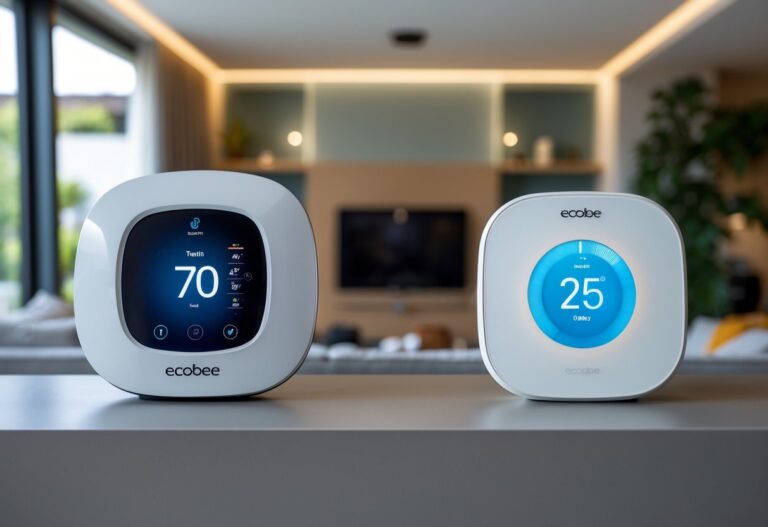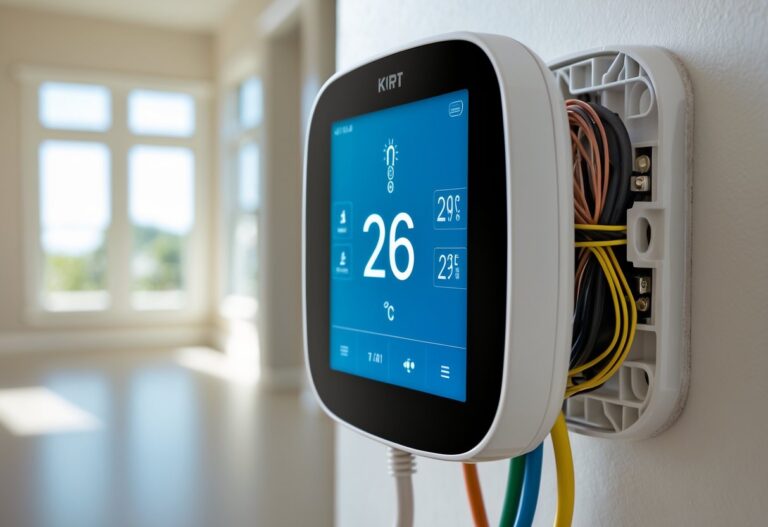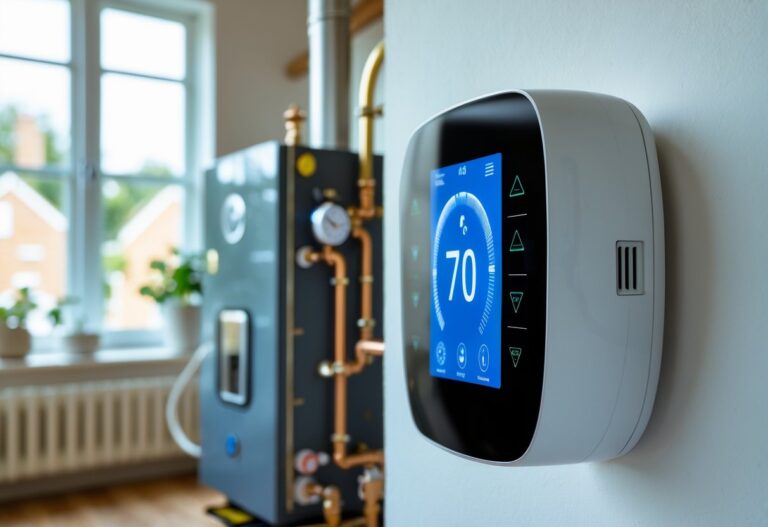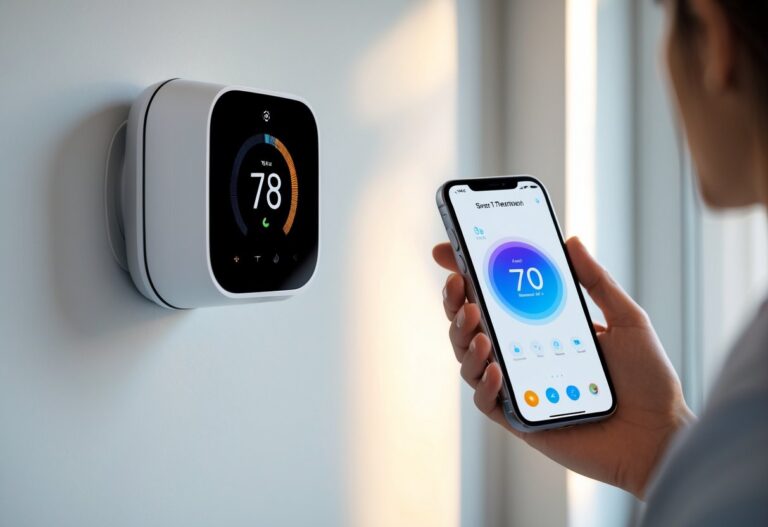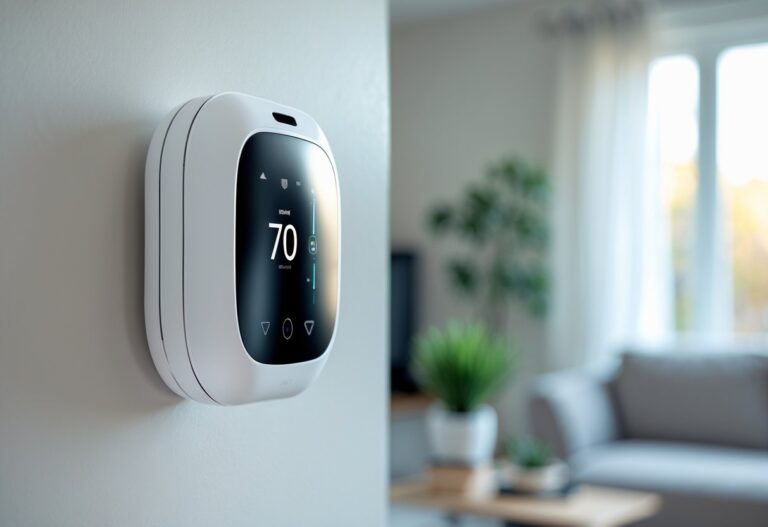Smart thermostats have changed the way you control the temperature in your home, providing more convenience and options than ever before. But if you’re wondering how these devices are powered or if they need batteries, you’re not alone. Most smart thermostats are powered by your home’s electrical wiring, but some models do include batteries—mainly as a backup during power outages or to keep their display working.
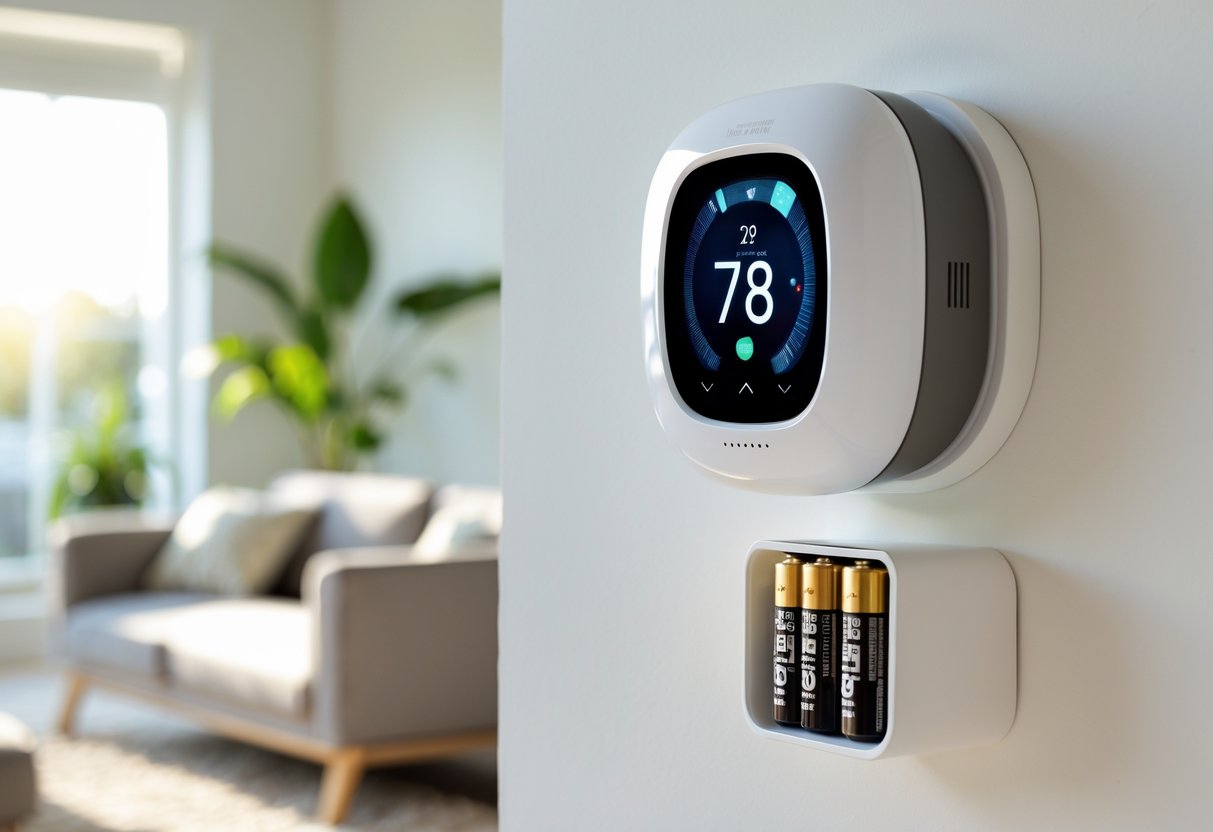
Understanding how your smart thermostat gets its power can help you avoid unexpected problems and make sure you get the most out of its features. If you want to know what kind of batteries are used, how long they last, and what to do when they need replacing, this article covers what you need to know.
Key Takeaways
- Most smart thermostats use home wiring, but some also have batteries.
- Battery type and use depend on the thermostat model.
- Regular checks help keep your smart thermostat running smoothly.
How Smart Thermostats Are Powered
Smart thermostats use a few different methods to get the power they need to control the temperature in your home. The most common ways include being wired to your home’s electrical system or using batteries as their main or backup power source.
Battery-Powered vs Hardwired Smart Thermostats
Some smart thermostats use batteries for their main source of power. These models are usually easy to install because they do not require direct wiring to your HVAC system. Battery-powered smart thermostats are often compatible with older homes that might not have the right wiring needed for hardwired models.
Hardwired smart thermostats receive power from your home’s electrical wiring. Most modern homes have the necessary C-wire (common wire) that delivers a steady flow of electricity to keep the thermostat running. Hardwired models do not rely on regular battery replacement and usually offer more features, such as WiFi connectivity and remote control, since they have a constant power supply.
Choosing between battery-powered and hardwired thermostats often depends on your home’s wiring and your preferences. Battery-powered models offer simple installation, while hardwired models are more reliable for long-term use.
Role of the Electrical System and C-Wire
Hardwired smart thermostats connect directly to your home’s electrical system, typically through your HVAC system. A key part of this setup is the C-wire, which provides a continuous flow of 24-volt power to the thermostat. The C-wire is essential for advanced features like always-on WiFi and bright display screens.
Without a C-wire, some smart thermostats may not get enough power to work properly. Some systems can use alternative solutions, like power extenders or adapters, if your home does not have a C-wire. Always check your HVAC wiring before choosing a hardwired thermostat to make sure it’s compatible with your electrical system.
A hardwired thermostat generally needs less maintenance since it draws its power from the house and does not run out of batteries. This makes it a better fit if you want a set-and-forget solution.
Battery as Backup Power During Outages
Many hardwired smart thermostats include batteries, but not for their main operation. Instead, these backup batteries keep your thermostat running during a power outage. This ensures your thermostat can hold its settings and keep managing your heating and cooling schedule until the power comes back.
Backup batteries are usually small, such as AA, AAA, or flat lithium batteries like CR2032. Their main job is to retain your programmed settings and prevent the thermostat from shutting down during short power interruptions.
If your area has frequent power outages, a thermostat with battery backup can provide extra peace of mind. You won’t lose your schedules, and your thermostat will return to normal operation without needing to be reset once the electricity is restored.
Types of Batteries Used in Smart Thermostats
Smart thermostats can use several types of batteries, each with its own features and benefits. The type of battery used affects how often you need to replace it, how easy it is to find replacements, and how the thermostat stays powered during outages.
AA Batteries and AAA Batteries
Many smart thermostats use AA or AAA batteries as a power source, especially for backup during power outages. These batteries are popular because they are widely available and affordable. AA batteries are larger and can hold more energy than AAA batteries, which can lead to a longer lifespan in most devices.
You can usually find these thermostats with a removable battery compartment, making it simple to change the batteries when needed. The replacement process often involves opening a small panel on the thermostat and swapping out the old batteries for new ones. It’s best to use fresh, high-quality batteries for the most reliable backup.
Brands differ in their battery requirements. Some models need two AA batteries, while others may need three AAA batteries. Always check the user manual or look inside the battery compartment to know what type to use.
Regular batteries should be checked about once a year. Leaking or old batteries can damage the thermostat’s contacts, so prompt replacement is important.
Rechargeable and Built-In Battery Options
Some smart thermostats are designed with rechargeable batteries or built-in power cells. These batteries are often lithium-ion and can recharge automatically through your thermostat’s wiring. Rechargeable batteries are popular in newer models because they don’t need frequent replacing.
A built-in battery will usually last several years before it needs servicing. For thermostats wired to a common wire (C-wire), the rechargeable battery will stay topped up. If your thermostat loses power, these batteries can keep the display and memory working until the main power returns.
If your model uses a built-in or rechargeable battery, there’s rarely a need to interact with it. Some brands use small button batteries—like the CR2032 coin cell—as a backup for storing settings. These are less common and usually last 1-3 years. Always refer to your thermostat’s manual for details on recharging or replacing these batteries.
Battery Compartment and Design Variations
Smart thermostats vary in how they hold and protect batteries. Battery compartment design affects how easy it is for you to change batteries and can influence the thermostat’s appearance.
Some thermostats feature a front-facing panel or a slide-out tray that gives quick access to the batteries. Others require you to take the thermostat off the wall mount to reach the battery compartment in the back. Look for clear labels showing battery direction and size inside the compartment to avoid mistakes.
Older or budget models may use a simple plastic door secured with a clip. Newer models typically have more secure locking mechanisms and might even use magnets or small screws. When installing or replacing batteries, make sure the compartment is fully closed to prevent dust or moisture from affecting the contacts.
Choosing a thermostat with an easy-to-access and well-sealed battery compartment can make ongoing maintenance simpler and help avoid issues caused by loose or corroded batteries. Always handle batteries with clean hands and dispose of used batteries safely according to local guidelines.
Battery Life and Maintenance in Smart Thermostats
Smart thermostats use batteries to store settings and keep working during power outages. Battery care is important to avoid interruptions and to make sure your thermostat performs its best.
Typical Battery Lifespan
Most smart thermostats use either AA, AAA, or lithium coin cell batteries. The lifespan depends on the type of battery and how much the device is used. On average, batteries in smart thermostats last from 12 to 24 months.
If your thermostat often connects to Wi-Fi or has a bright display, the battery may drain faster. Backup batteries, designed for temporary use during outages, also get used up more quickly. It helps to check the manufacturer’s manual to know the expected battery life for your specific model.
Replacing the batteries before they are fully drained keeps your settings safe and your heating and cooling system reliable.
How to Replace Thermostat Batteries
Replacing smart thermostat batteries is simple and usually takes just a few minutes. Start by turning off the thermostat (if recommended by your manufacturer) or setting your HVAC system to off.
Remove the front cover or slide the thermostat faceplate off the wall mount. Inside, you will see the battery compartment. Carefully take out the old batteries and insert new ones, following the + and − symbols.
Choose high-quality batteries to avoid leaks or damage. Once replaced, reattach the cover and restore any settings if needed. Some models require a reset or reboot after a battery swap. Always check your user guide for any extra steps.
Signs of Low Battery Performance
Knowing when to change your batteries helps you avoid losing thermostat functions. Common warning signs include:
- A low battery icon or message on the display
- The thermostat screen becomes dim or unresponsive
- Your programmed heating or cooling schedule stops working
- The device randomly resets or loses Wi-Fi connection
Many smart thermostats also send alerts to your phone or show an indicator light when the battery is low. If you notice any of these signs, replace the batteries right away to keep your home climate control working smoothly. Regular battery checks will help you maintain peak thermostat performance.
Features and Benefits Affected by Power Source
The way your smart thermostat gets its power can impact features like energy saving, remote control, and how well it maintains a stable indoor temperature. Knowing which type of power source fits your needs helps you get the most from your smart thermostat.
Energy Efficiency and Energy Saving Features
A consistent power source is important for smart thermostats that track usage, learn your schedule, and adjust settings for energy savings.
Wired thermostats often support more advanced features, such as learning algorithms and energy usage data. This is because they have an uninterrupted power supply and can run complex processes without worrying about battery life.
Battery-powered models, or those running on backup batteries, may limit some features to save energy when running on batteries only. You might see reduced screen brightness, less frequent updates, or fewer data-tracking options in these cases.
Some models still offer scheduling and eco-modes on battery, but wired units can deliver more robust data and advanced automation. Checking the power status and changing batteries when needed ensures your thermostat continues to maximize energy efficiency.
Remote Access and Smart Home Integration
Reliable power is key for features like remote monitoring, smart home integration, and adjusting settings from your phone or voice assistant.
Thermostats connected directly to your home’s wiring usually offer continuous remote access via Wi-Fi or other smart platforms. This makes it easy to update schedules, change settings, and get alerts from anywhere.
Battery-powered thermostats can still connect to apps and smart home systems. However, if the battery is low or runs out, you could lose the ability to control the unit remotely or receive important notifications.
If you depend on device integration—like connecting with Alexa, Google Home, or Apple HomeKit—wired or hybrid models are often more reliable. Battery-only units may miss updates or disconnect, especially during power outages or after a long time without a battery change.
Consistent Temperature Control and Regulation
The main job of a thermostat is to keep your home at a comfortable and steady temperature. Whether your thermostat runs on batteries or is hardwired affects how well it can do this, especially during power disruptions.
Hardwired thermostats use your furnace’s or HVAC system’s power, so they maintain temperature settings, scheduling, and climate control unless the main power goes out. Many also keep your chosen settings stored, even if power is lost temporarily.
Thermostats with battery backup can keep working during blackouts or if the furnace loses power. This ensures your pre-set schedules and manual adjustments remain active, so temperature swings and equipment shutoffs are less likely.
If the thermostat runs out of battery and there’s no backup, you could lose temperature regulation and climate comfort until power is restored. For steady performance, check battery levels regularly or choose a wired or hybrid option that matches your needs.

